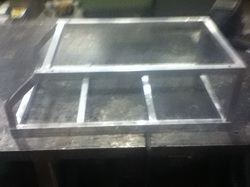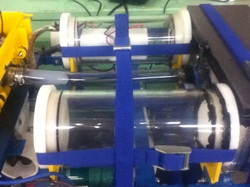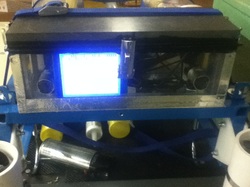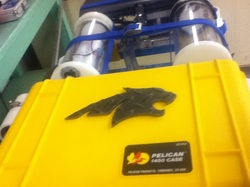Frame Assembly

The frame is made using 1x1x1/8" aluminum tubing. The outer structure of the frame is welded together to give rigidity in case it were to crash or be dropped. the inner structure is a modular design enabling future teams to change components of the submarine and how they are laid out. The Frame also has a lower section which lifts the main structure up to allow for our two strafing motors, as well as, a place to mount our grapples. Finally there is an upper cage that can be detached to allow the team to access the electronics. The upper cage is where the crane hooks are and it offers protection to the electronic housing if it flips.
Battery Pods

If necessary the submarine can carry up to two battery pods. One pod is currently hooked into the circuitry due to the low power requirements for the submarine. The other was mounted for two reasons. First, if the submarine was ever expanded and more power was required the team would be able to utilize the second pod. Second, the pod balances the weight and buoyancy of the submarine helping to reach neutral buoyancy. These Pods are made of 4.5" acrylic tubing and two end caps made of 5" HDPE round stock.
Camera Housing

Due to weight and buoyancy issues a larger camera housing was needed from the one that was originally designed. The new camera housing was constructed from acrylic sheet that was cut, machined, screwed, and sealed. The lid was made using 2" thick PVC it then attaches to the housing body using 4 gate latches and then is sealed again.
Pelican Case

A 1500 series Pelican case was used to house the brain of the submarine. The pelican case is the nerve center for the submarine it houses the computer, the motor controllers, the arduino, and many other electronics needed to construct a successful submarine.
